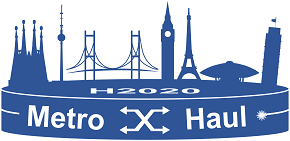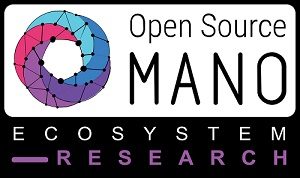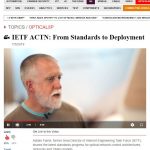IETF Tools for Management and Operation of Flexible Optical Metro Networks in Support of 5G
We have just held a successful pre-conference workshop at NGON and DCI World 2019 in Nice as part of NGON’s Optical Masterclass Series. The title of the workshop was “Evolving Approaches to the Control of 5G Support Networks Using IETF Technologies”, and it featured speakers from network operators, equipment vendors, researchers, and implementers from across Europe.
The workshop was to be chaired by Sterling Perrin, Principal Analyst from Heavy Reading, who brought his long experience of optical networking. Sterling helped steer the discussion of the tools and technologies that have been developed by the Internet Engineering Task Force (IETF) that can be used to support the emerging demands that 5G services will place on networks, and especially on transport networks.
Organized by Adrian Farrel and Daniel King, this workshop deliberately reached out beyond the Metro-Haul project to bring in speakers who are experts in the subject material, but do not all work for partners in the consortium. Thus, in addition to Adrian Farrel and Jorge E. López de Vergara Méndez who participate in Metro-Haul, the workshop was also addressed by Julien Meuric of Orange, Italo Busi of Huawei, and Jeff Bouquier of Vodafone.
Sterling opened the workshop by describing the scope, introducing the IETF, and presenting an overview of Metro-Haul. This set the scene for the five presentations that followed.

The first speaker was Adrian Farrel from Old Dog Consulting. Adrian has been active in the IETF for 20 years and has served as co-chair of many working groups. He was also one of the IETF’s Routing Area Director for 6 years.
Adrian presented a very brief overview of the “Traffic Engineering Technology Evolution in the IETF.” His closing message was that the IETF has successfully developed several relevant architectures, in particular, the architecture for Abstraction and Control of TE Networks (ACTN). He said that the IETF continues to work on the development of YANG models applicable to ACTN.
Next up was Julien Meuric, an Expert in Future Networks at Orange, and one or two network operators participating in the workshop. Julien is co-chair of the IETF’s Path Computation Element (PCE) working group and has been active in the specification of control plane technologies for optical and TE networks for many years. 
The topic of Julien’s talk was “The Role of GMPLS/PCE and ACTN in Network Operations”. He gave some history of the protocols and components, but then expanded on the ACTN architecture, the applicability of PCE within that architecture, and the scope of use of ACTN. He concluded with his vision of the future: a form of “distributed SDN” that includes centralised controllers supported by distributed control planes.
Although Metro-Haul includes many partners who are equipment vendors, we decided to invite Italo Busi from Huawei to address the workshop. Italo leads the YANG Design Team for the IETF’s CCAMP working group and has been one of the key developers of the ACTN specifications within the IETF. Italo developed the subjects introduced so far by describing “Using the IETF’s ACTN Architecture and YANG Models for Packet and Transport Networks”.
 Italo explained how the ACTN architecture works, what the components are, and what YANG models are needed to realise the architecture. He also presented the map of IETF standard YANG models and related YANG models. He explained which are complete already, which are almost done, and which YANG models need a little more work. He concluded that it is already possible to prototype ACTN using existing YANG models, and that very soon a full set of models will be available as RFCs to enable the implementation of interoperable control systems for multi-technology and multi-vendor networks.
Italo explained how the ACTN architecture works, what the components are, and what YANG models are needed to realise the architecture. He also presented the map of IETF standard YANG models and related YANG models. He explained which are complete already, which are almost done, and which YANG models need a little more work. He concluded that it is already possible to prototype ACTN using existing YANG models, and that very soon a full set of models will be available as RFCs to enable the implementation of interoperable control systems for multi-technology and multi-vendor networks.
Jorge E. López de Vergara Méndez participates in Metro-Haul through Naudit, a Spanish start-up. However, he participated in the workshop in his role as Associate Professor, Electronics and Communication Technologies Department, Universidad Autónoma de Madrid where he has been involved in developing YANG models within the IETF.

Jorge explained how YANG models have become popular as a mechanism for control and operation of optical networks, and then described where YANG models sit in the management architecture for the Metro-Haul project.
In his conclusion, Jorge observed that YANG models are necessary to standardise network configuration that can offer alignment between approaches across multiple equipment vendors. This led him to note that the success or failure of YANG models within the IETF will depend to a great extent on the level of support that they get from the different equipment vendors.
The final speaker in the workshop for Jeff Bouquier from Vodafone. Vodafone has been leading the charge for SDN among network operator, and this allowed Jeff to talk about “Vodafone SDN for Single Transport & IETF Pre-Deployment Experience”. Jeff presented Vodafone’s target architecture for their transport networks and explained how SDN control is intended to provide coherent oversight for multi-layer and multi-domain networks.

Jeff went on to list the many IETF YANG models that Vodafone has already tested, listing over 50 tests that have already passed as the company builds towards full automation of transport networks: a goal that Jeff says is “key for 5G and advanced business services.” The picture is not completely perfect, according to Jeff, and he listed eight problems with IETF YANG models that have been identified during testing.
Nevertheless, through successful cooperation between Vodafone and its vendors, great progress has been made addressing multi-area/multi-vendor scenarios that are key for operators to automate the transport network in an end-to-end way. Jeff has high expectations that improvements will be made to the IETF YANG models and plans to extend Vodafone’s work to also use IETF standards for Layer One and Layer Two service models at a Northbound Interface (NBI). In his opinion, the IETF can be considered the target source of all standard YANG models for SDN in the Single Transport architecture and for all technologies in scope (IP/MPLS, Optical and Microwave).




